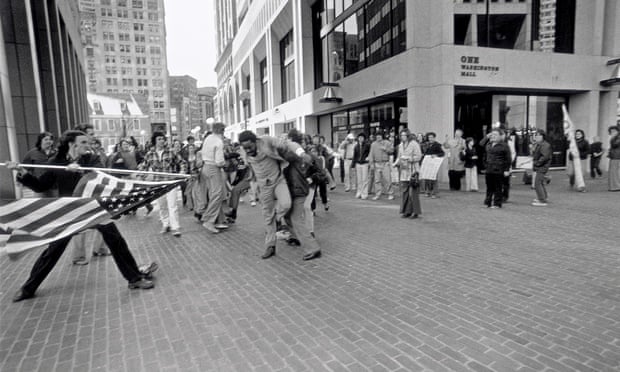Via Photograph Magazine
Margaret Bourke-White: Pioneering Photojournalist
Monroe Gallery of Photography, Santa Fe
Margaret Bourke-White, Buchenwald Prisoners, 1945. Courtesy Monroe Gallery of Photography ©Time In.
Referring to the French Impressionist painter Claude Monet, fellow painter Paul Cézanne famously quipped to art dealer Ambroise Vollard: “Monet is only an eye, but my God what an eye!” The same could be said for American photographer Margaret Bourke-White (1904-1971). Examining Bourke-White’s work, from the late 1920s through the 1950s, one quickly senses her complete command of the photographic tools at her disposal that resulted in compositions filled with formal elements of design that were part and parcel of narratives that documented times of significant events. Soaring heights of urban construction, extreme poverty in the South, and World War II are only a few of the historic moments captured in photographs by Bourke-White – many of which are iconic in American photography.
In 50 photographs on view at Monroe Gallery of Photography through June 28, Margaret Bourke-White: Pioneering Photojournalist gives a brief, yet fine overview of her prolific career.
Margaret Bourke-White, Fort Peck Dam, Fort Peck, MT, 1936. Courtesy Monroe Gallery of Photography ©Time Inc
Included are instantly recognizable images such as At the Time of the Louisville Flood, Louisville, Kentucky, 1937, where people are queued in a bread line below a billboard exuding the good life, as well as Buchenwald Prisoners, Germany, 1945, in which prisoners confined behind barbed-wire await liberation -- the latter taken when Bourke-White was on assignment for Life Magazine traveling with Patton’s army. In one of her most artistic images, Patterns Made by Steel Liners for Diversion Tunnels, Fort Peck Dam, Montana, 1936, geometric patterns fill the frame composed of various machine-hewed disks with radiating spokes. Bourke-White, whose career was cut short by Parkinson’s disease in 1956, once said, “To understand another human being you must gain insight into the conditions which made him what he is.” She was tenacious in her pursuit of photographs that conveyed truths about the human condition, as well as the beauty in things produced by humankind.
— By Douglas Fairfield 05/04/2015




